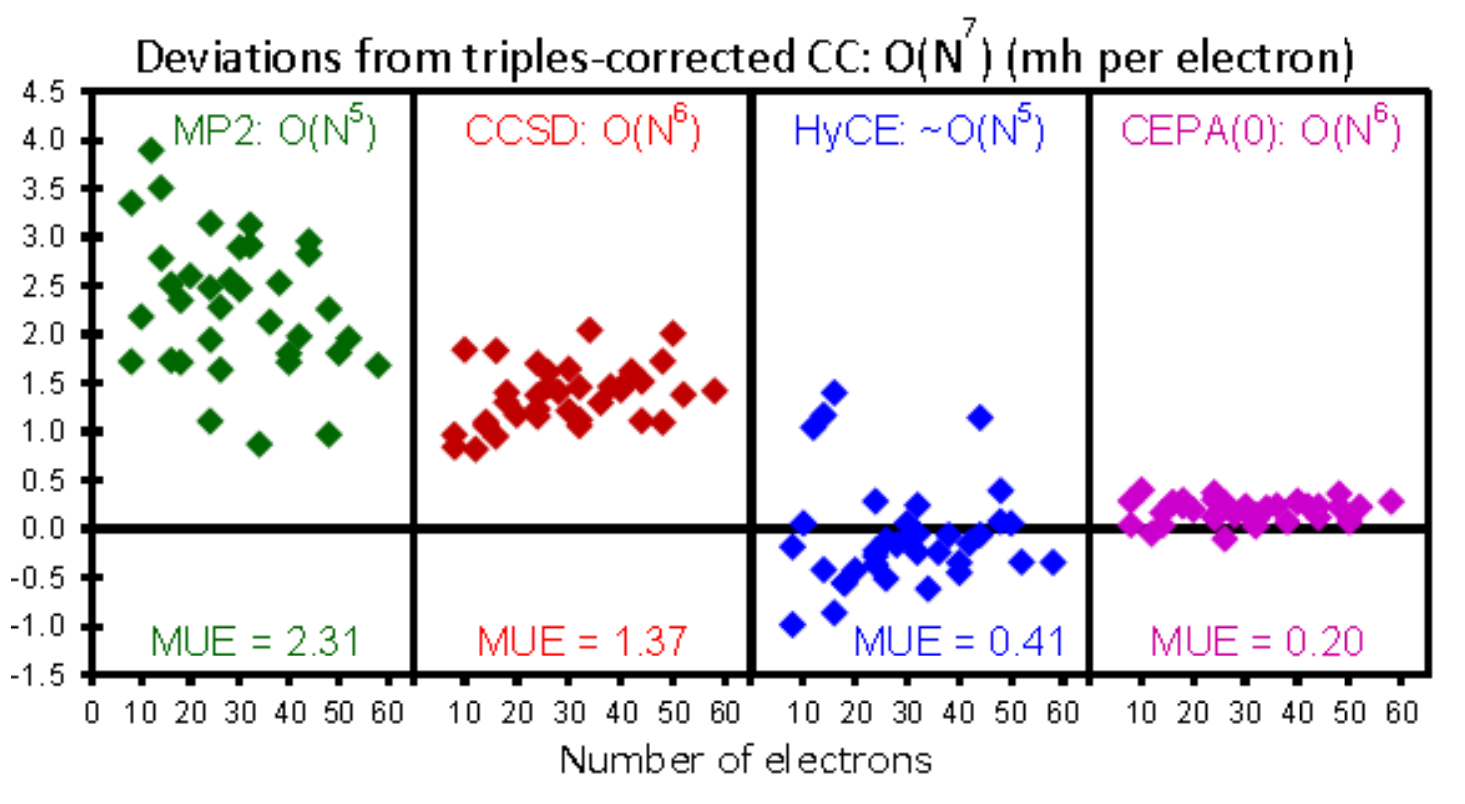A Novel Hybrid Correlation Energy (HyCE) Approach Based on
Separate Evaluations of Internal and External Components
Joseph Ivanic
Advanced Biomedical Computational Sciences Group, Frederick National Laboratory for Cancer
Research, Frederick, Maryland 21702
Email: joseph.ivanic@nih.gov
A novel hybrid correlation energy (HyCE) approach is proposed that determines the total correlation
energy via distinct computation of its internal and external components.
1 This approach evolved from two
related studies. First, rigorous assessment of the accuracies and size extensivities of a number of electron
correlation methods, that include perturbation theory (PT2), coupled- cluster (CC), configuration
interaction (CI), and coupled electron pair approximation (CEPA), shows that the CEPA(0) variant of the
latter and triples-corrected CC methods consistently perform very similarly. Second, by generating valence
virtual orbitals (VVOs), a concept introduced by Klaus Ruedenberg, we were able to partition total
correlation energies into internal and external parts. These findings led to development of the HyCE
approach, whereby the internal and external correlation energies are determined separately via
CEPA(0)/VVO and PT2/external calculations, respectively, and summed to obtain the total. It should be
noted that the CEPA(0)/VVO internal energy is a cheap but good approximation to the full-valence, or
non-dynamic, correlation energy that is recovered by the Full Optimized Reaction Space (FORS) method
developed by Klaus Ruedenberg. When applied to six steadily-growing chain systems and a 36-molecule
benchmark test set it was found that HyCE energies followed closely those of triples-corrected CC and
CEPA(0) while outperforming MP2 and CCSD. The success of the HyCE approach is more notable when
considering that its cost is only slightly more than MP2 and significantly cheaper than the CC
approaches.

(1) J. Ivanic and M. W. Schmidt, Hybrid Correlation Energy (HyCE): An Approach Based on Separate Evaluations
of Internal and External Components. J. Phys. Chem. A 2018, 122, 5223-5237.